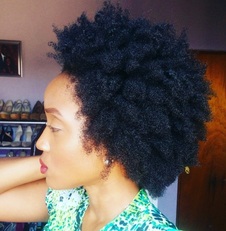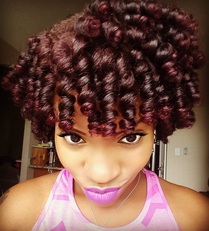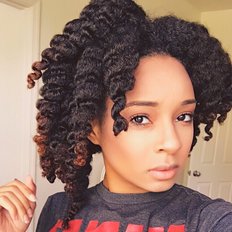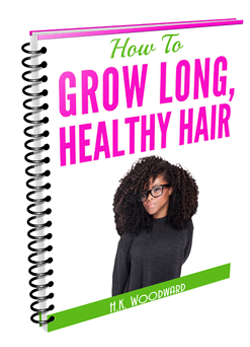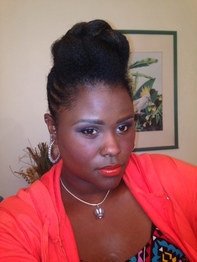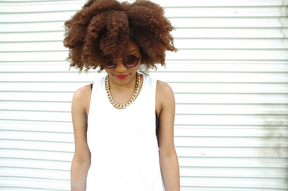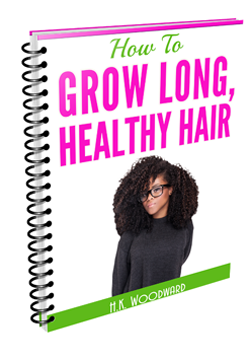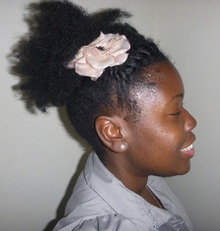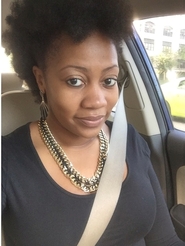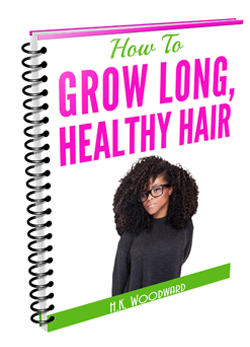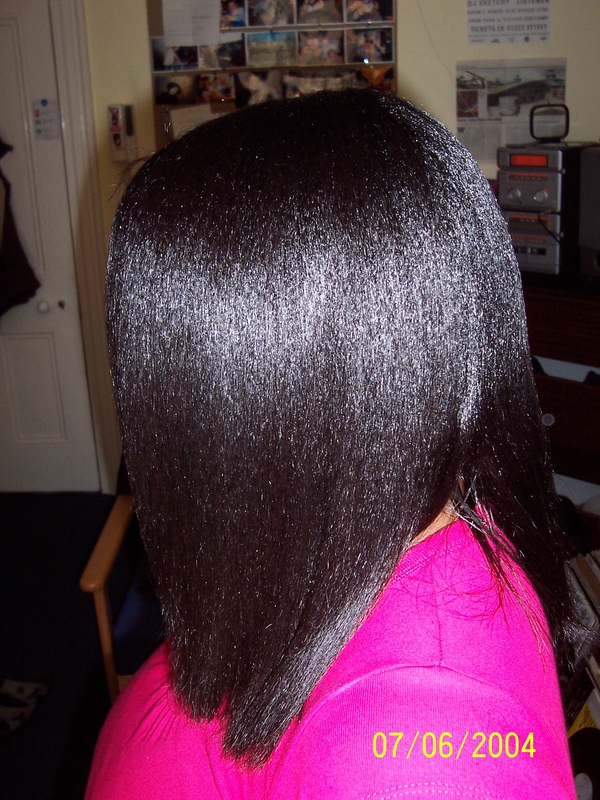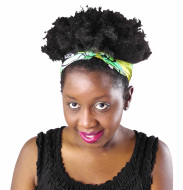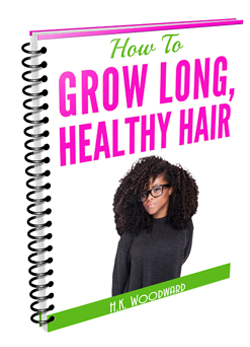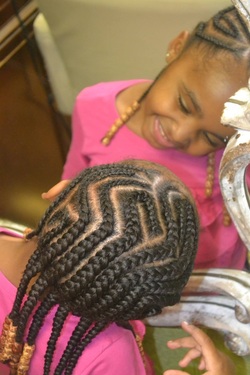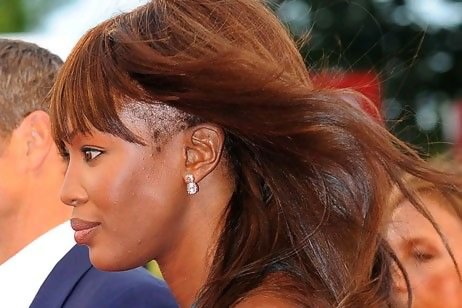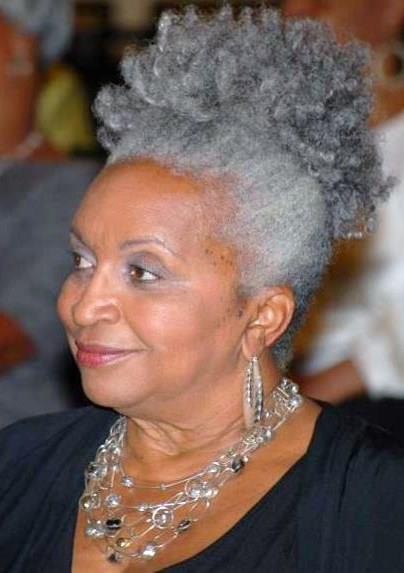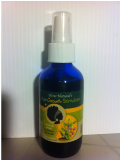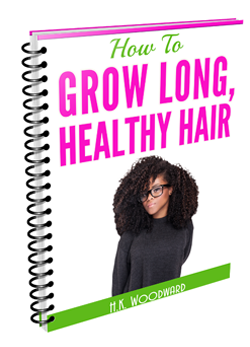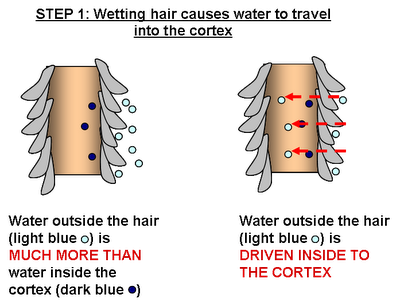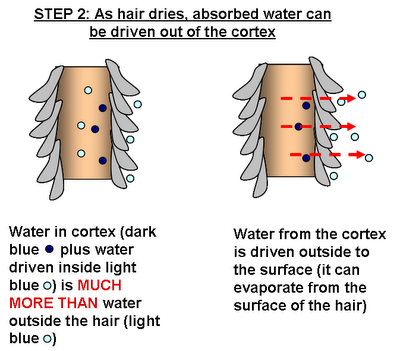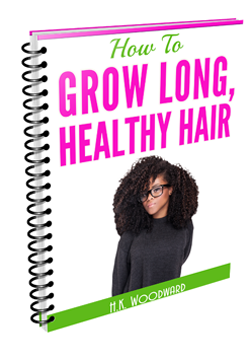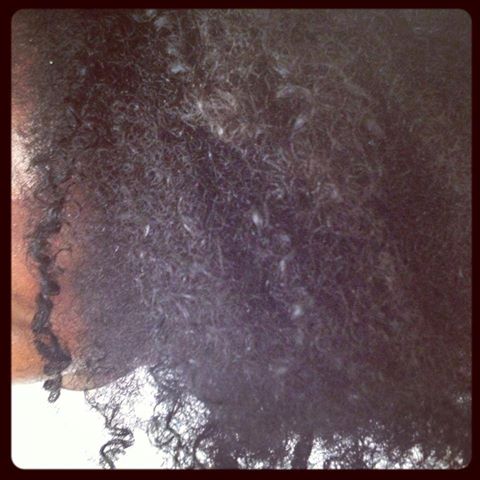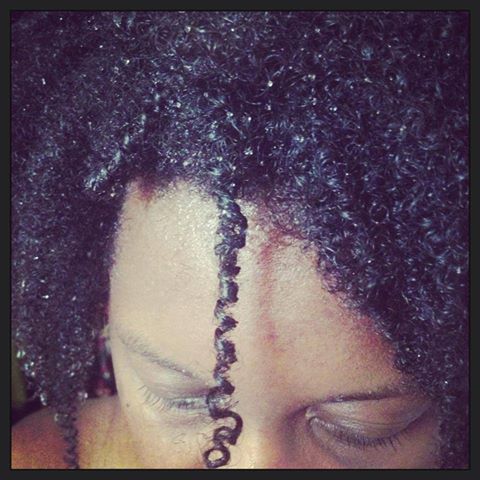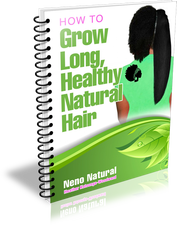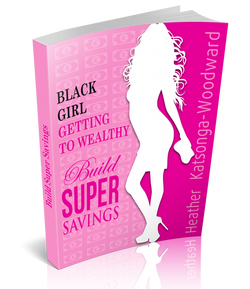|
This is a VERY common problem, almost everyone including the super model Naomi Campbell has suffered from it but some have it a lot worse than others. Hair gets thinner or breaks around the edges for three main reasons:
SOLUTIONS 1. Don't wear anything too tightly around your head. Hair growth and health requires the delivery of nutrients and oxygen through the blood stream to the scalp. This delivery will not be obstructed if:
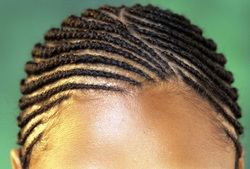 Oil edges & corn row lines to ease pressure from pulling. Oil edges & corn row lines to ease pressure from pulling.
2. Speak to your stylist if they're pulling too tight
3. Don't tie your hair up too tightly
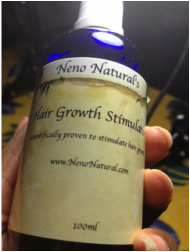
4. Give extra moisture to hair around the sides
Envirionmental factors, such as wind, dry hair around the outside more than hair that is more centrally located. You need to compensate for this by giving peripheral hair more moisture, e.g. using a shea butter based cream or butter and locking that in with an oil. 5. Massage the edges regularly... ...to stimulate the flow of oxygen and nutrients to the affected areas. A good oil, e.g. Neno Natural's Hair Growth Stimulator will make this massaging more effective. Put a shower cap over your head for 15 minutes to maximise absorption of the essential oils. 6. Take care with the face scrubs, face creams and foundations! Finally, when you're having a bath/shower or putting on makeup protect the hair from those chemicals; don't rub the forefront more than is necessary with these cosmetics.
This is one issue you may not have thought about before. When hair is wet, it’s very elastic and can stretch out much further than it can when it is dry.
As hair dries, it shrinks back to its normal length. This is a problem if you style your hair into a fixed style while it’s wet. Ponytails / Buns / Puffs For example, if you pull your natural hair into a ponytail, bun or puff while it’s wet in a way that it can’t shrink back easily then as the hair dries and shrinks it could pull on the edges so much that the roots are weakened and could be pulled out more easily with additional styling. The area where you band/tie your hair may also weaken because it’s prevented from shrinking back to position. Over time, if you always tie your hair in exactly the same place, this hair will weaken because it’s always restricted from shrinking and ultimately break. This is called “wet holder stress” (The Science of Black Hair by Audrey Davis-Sivasothy). Solution
Stretching Hair Use twists and plaits to stretch and dry your hair, these styles are flexible and don’t completely hold hair back when it’s trying to shrink back, they simply limit how much it can shrink. Cornrows and Flat Twists Cornrows and flat twists have the potential to be very restrictive in allowing hair to shrink back. My solution? I dry my hair in twists then when it’s dried or just damp I release the hair and plait the cornrows. This way it is stretched enough to style but wet holder stress is avoided. Kinky and curly hair is a lot more stretchy than already straight hair so the stresses we impose on kinky-curly hair when it’s wet compared to when it is dry have more consequences. Have you had experience with wet holder stress? Comment and tell me about it.
Once you’re firmly past the TWA stage, even if you can’t tie you hair all in one place it’s best to wash your hair in 4 to 8 twists to minimize breakage. Once you master the technique it doesn’t take much time at all.
WHY TWIST DURING THE WASG PROCESS? 1. Tangling Is Reduced When hair strands are bound together in a twist individual hairs can’t wander off and tangle around neighbouring hair. Less tangling means less breakage. 2. Tensile Strength Is Higher There is strength in numbers. The twist as a whole is stronger than any individual strand. You can compare this to pieces of paper. When you receive a load of mail and you tear a single letter it’s easy right? However when you try to tear just 5 pieces if paper in one go it’s a lot more challenging, correct? Increase this to 10 papers and it’s even harder. This analogy also works if you use a shredder: a single piece goes through very quickly but 3 pieces go through much more slowly; increase this to 6 pieces of paper and your shredder gets jammed. When Should You Start Twisting Your Natural Hair During The Wash Process? When your hair is getting long enough such that you recognize tangling as a problem; this will happen earlier for some people and later for others. If it happens early for you, use more twisted sections. As hair gets longer you’ll be able to work with fewer twisted sections. At What Point In The Wash Process Should You Twist Your Natural Hair? Right at the beginning of your wash process when you’re detangling. Should you undo each twist as you wash the section? You can but you don’t have to. You will minimize breakage best by leaving the twist intact; that said, ensure that you wash the twist thoroughly to get product out. Make each twist looser at the roots and tighter at the ends. The looseness near the roots will make it easier to massage the scalp and dislodge any oils and dirt there; the tightness of the ends will help to prevent the twist from getting undone. Normally, when I am in the shower I have to redo the ends because they start coming undone – that is normal. In summary, to minimize breakage, twist hair during your wash. If you have thicker/course strands you may find that twisting makes little difference to breakage but it should still help with maintaining detangled strands. Leave any thoughts or comments, please.
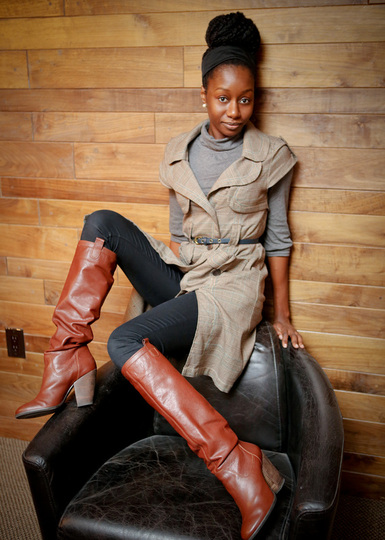 Click for Nia's regimen. Click for Nia's regimen.
Hair damage is a very common problem.
Over time the outer layer of hair, the cuticle, naturally erodes away, breaks and lifts. These are points of weakness where the hair is likely to break. I like to refer to these gaps in hair as “hair potholes” (note that this is not a technical term!). Bad hair management, e.g. excessive use of heat and rough styling equipment increases the likelihood of such potholes occurring. Most conditioners help to prevent such damage but at the moment none actually repair it. Scientists are working to solve this problem; just like a broken or fractured bone can be completely healed they want to do the same with damaged hair. What would be needed to repair the hair would be something that permanently fills the hole. At the moment, conditioners fill these gaps but after a couple of washes those holes and gaps are gaping open again. It’s just like having a road with potholes and filling those holes with sand, when the rain comes you’re back to square one! Anyhow, the first major move in technology to repair hair is something called Polyelectrolyte Complex, PEC. It consists of a negatively charged ion called PVM/MA polymer and a positively charged ion called Polyquaternium-28. How does PEC work? Instead of just coating hair like most conditioners do it penetrates the hair and seals it from inside. When PEC penetrates hair and dries the split end is permanently fixed – the pothole has been filled with tar! As the technology is still in its infancy I can’t ascertain the strength of this fix. That is, does one application fix that hair strand permanently or is re-application needed to maintain the same broken strand every so often. Also, does one application fix all the damage in one hit or are several rounds of conditioning needed to get to all the damaged hairs? What factors work against PEC? E.g. does blow drying and straightening hair with heat cause the fixed hair to get damaged again more quickly? Many questions remain open and more tests are needed to confirm this. 
References:
Get your FREE ebook on How To Grow Long, Healthy Natural Kinky or Curly Hair. 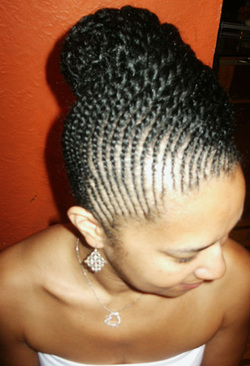
This is one of those posts that's going to be short to the point and have only one point in it:
When you braid your hair, the best thing you can do for your edges is to cornrow or flat twist them. I first went natural because my hair was looking raggedy and getting thinner and the edges were the bits that needed the most TLC. Two years later, I am less psycho about not exposing my ends and I am not so dogmatic about the dos and donts of my hair but three things have remained constant:
These are the best tips I can give. What to do if the hair around your edges gets damaged? In some cases, it will never grow back but you can ensure it does not get worse by referring to these 6 Easy solutions for hair that's breaking or thinning around the edges!
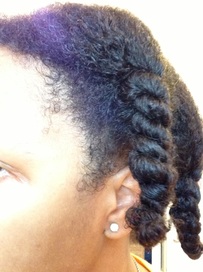 Reducing your hair's porosity will help you retain moisture better and for longer. There are four things you can do to reduce porosity: 1. Do a pre-shampoo treatment. 2. Never shampoo without following up with a conditioner. 3. Rinse hair after your wash routine using a lemon rinse or an apple cider vinegar rinse. 4. Always seal in moisture via the LCO or LOC method. Pre-poos A pre-shampoo treatment, e.g. a detangling conditioner or even the application of an oil high in saturated fats (e.g. coconut oil) or very high in monounsaturated fats (e.g. jojoba oil) makes hair more pliable and reduces hygral fatigue. The oil or conditioner goes into the hair fibre so that it doesn't swell as much when it is wet with water. 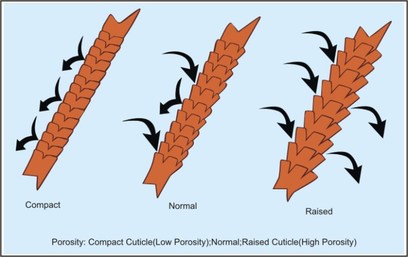 Conditioners Conditioner are designed to be more acidic than shampoos. Acidity causes the hair cuticle to tighten and contract. Porosity falls and moisture retention is much better post-conditioner than it is post-shampoo. ACV and Lemon Rinse Both ACV and lemons are acidic. They are much more acidic than hair so they need to be diluted in water before being run through hair. Sealing In Moisture Once you have applied a moisturiser it is always better to follow up with a shea butter and or an oil to give the moisture the best chance of staying within your hair. Some hair types are sealed better using the LOC method and other hair types retain moisture much more effective if the LCO method is applied: You might also like: 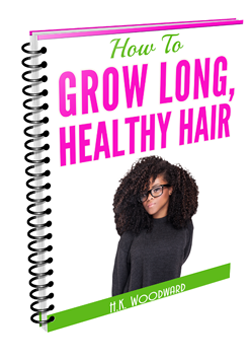 Get your FREE ebook on How To Grow Long, Healthy Natural Kinky or Curly Hair.  When hair is wet, it absorbs water and swells. As it dries it releases water and shrivels. This shrinking and swelling can lead to hair damage called hygral fatigue. How can you prevent hygral fatigue? Before you shampoo your hair plasticize it by 1. Applying a detangling conditioner or 2. Applying a polar oil (e.g. coconut oil, jojoba oil, avocado oil) or 3. Applying a bit of your regular conditioner with a spritz of water. Whichever pre-shampoo treatment you use will penetrate your hair fibre so that when your hair is wet it does not swell as much. Note that not every hair oil will work as a pre-shampoo treatment. Oils that are high in polyunsaturated fatty acids (e.g. castor oil) cannot penetrate the hair fibre; such oils are better for sealing in hair moisture. You might also like: What Are Polar Oils? How Do They Protect Natural Hair from Hygral Fatigue? 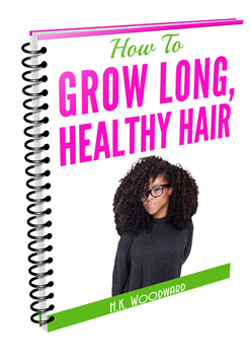 Get your FREE ebook on How To Grow Long, Healthy Natural Kinky or Curly Hair. 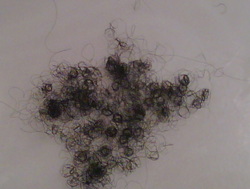 Shed hairs! Shed hairs!
The quick answer: YES.
Shedding hair is a natural process that you can't stop; it's genetically predetermined. All hair has three growth phases: 1. Anagen phase: hair growth Can last 1 to 10 years, but is 4 to 7 year on average. According to The Science of Black Hair, 88% of the hairs on your head are in the anagen (growth) phase at any one time. 2. Catagen phase: hair resting Lasts anywhere from 4 weeks to 4 months; 1% of the hairs on your head are currently in the catagen (resting) phase. 3. Telogen phase: hair shedding 11% of the hairs on your head are currently in the telogen (shedding) phase. These hairs either come our on their own or are pulled out during styling. If you have braids or dreadlocks the shed hairs don't fall out because they are restricted from doing so. This is actually one of the reasons locs can appear to be thicker than normall hair, shed hair remains matted to the loc and cannot escape. Shedding is different to breakage. Broken hair does't usually come out from the root it is broken off at an intermediate point due to stress, styling and other hair handling. How can you tell if the hair in your hand is shed or broken? A shed hair has a white/grey bulb at the end of it. Why is this? Because hair in the catagen phase doesn't produce hair color or melanin. A shed hair will also tend to be much longer than a broken hair because it detaches itself straight from the scalp. How many hairs should you shed in a day under normal circumstances? Most say 50 to 100 hair per day; others say up to 200 hairs is normal. |
I now blog about wealth creation - so if you have any money questions meet me there, you can do all sorts of cool things like leave me a voicemail.
By Heather Katsonga-Woodward
I was a natural hair blogger and mixtress living between London & Chicago from 2012 to 2017. I always thought I was 4C but some say 4B; images below - you decide! Heather xx Categories
All
Archives
November 2016
|

